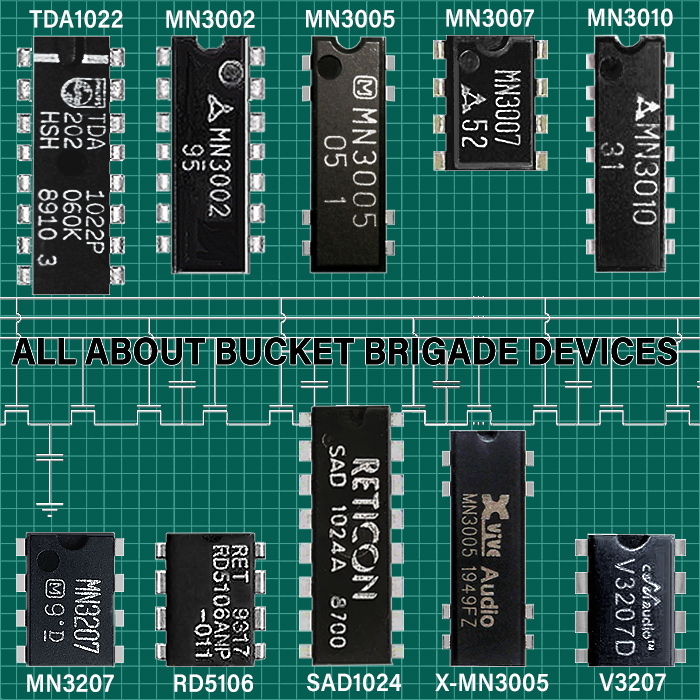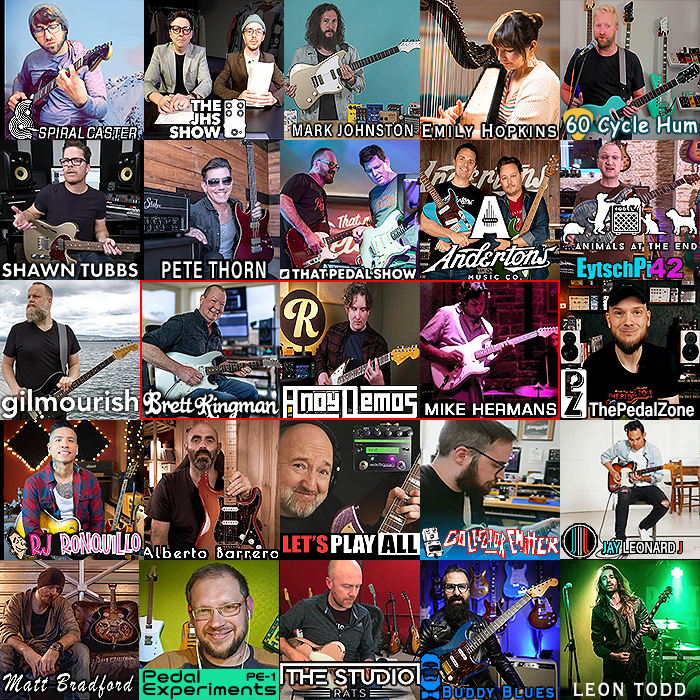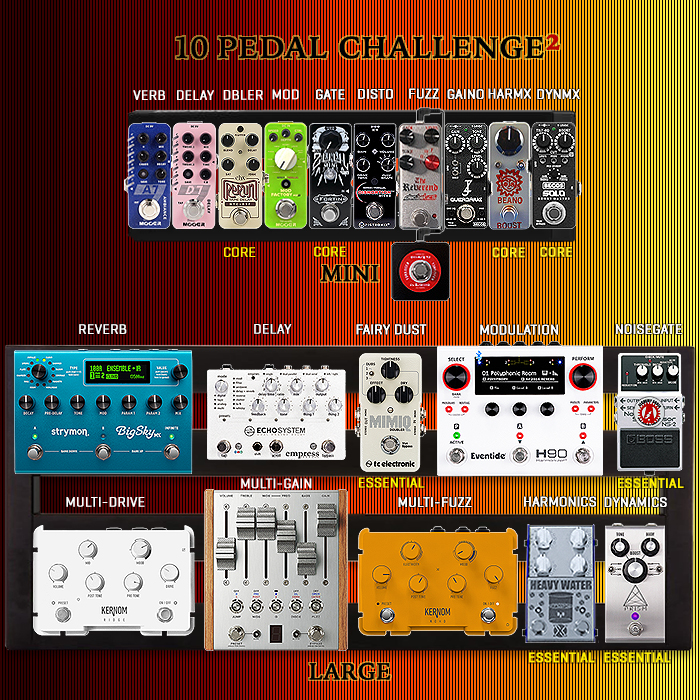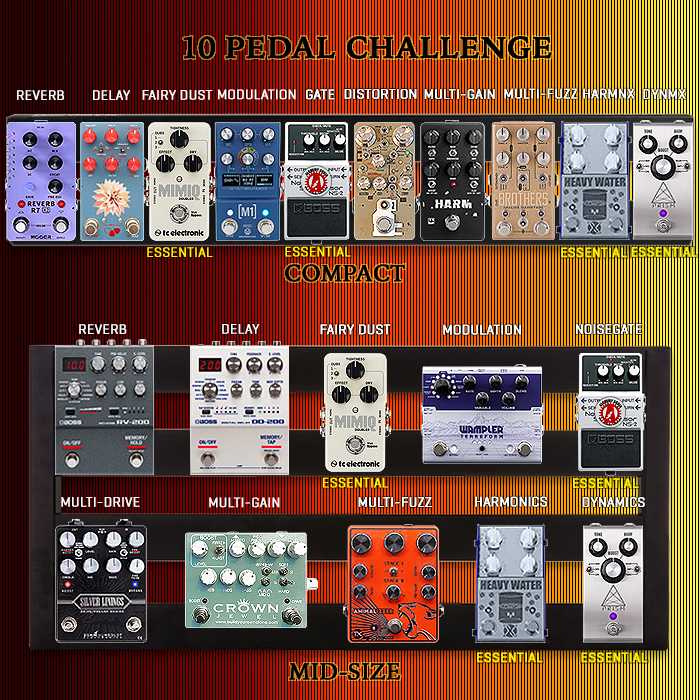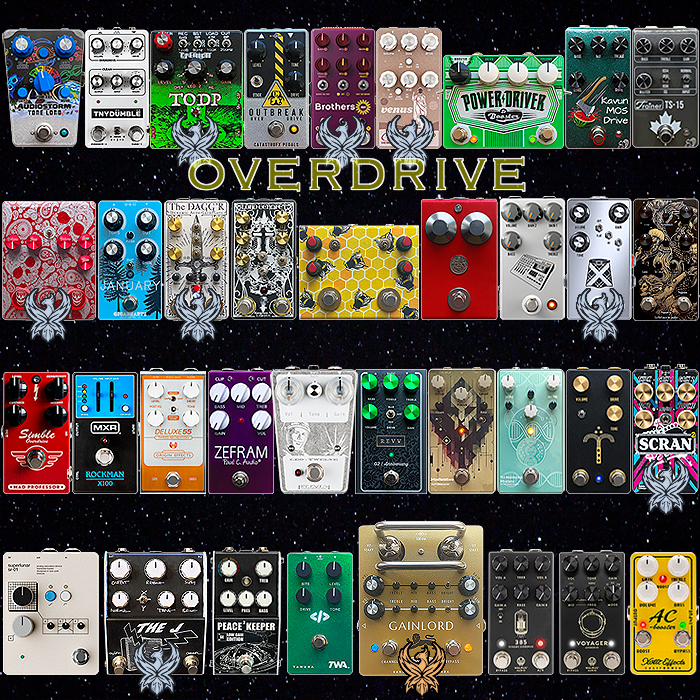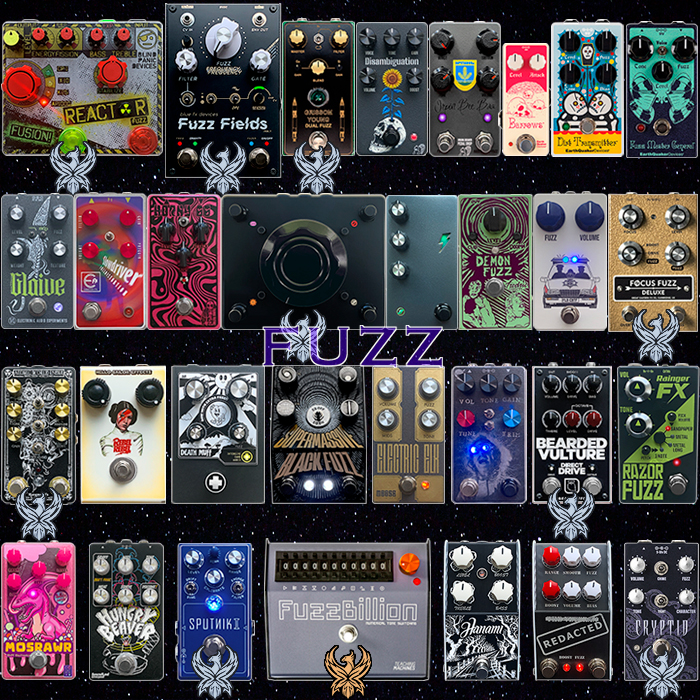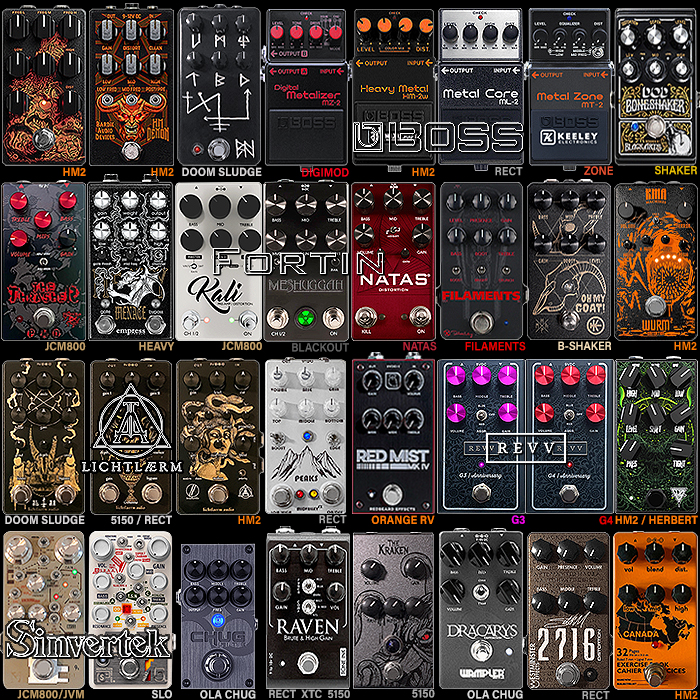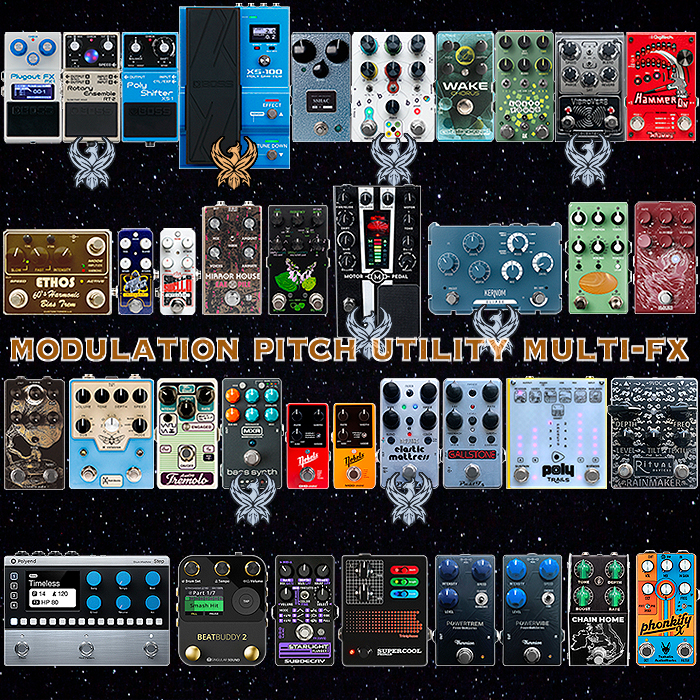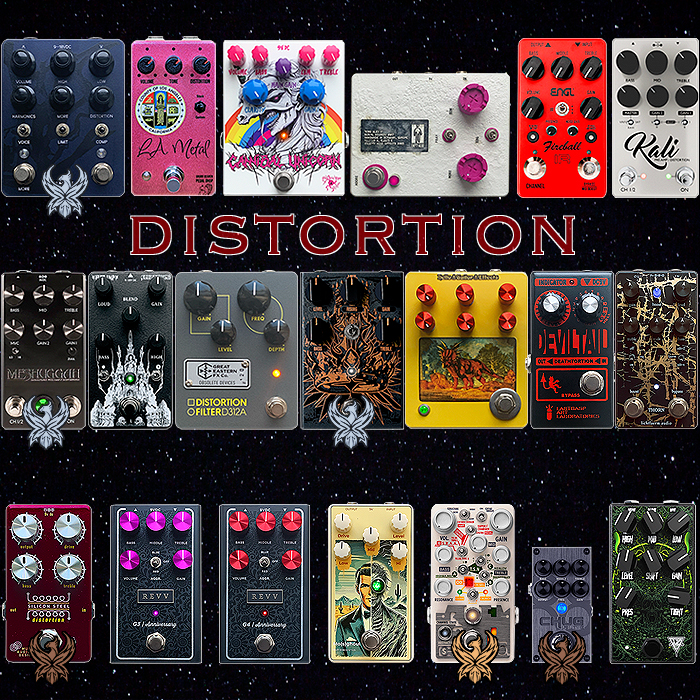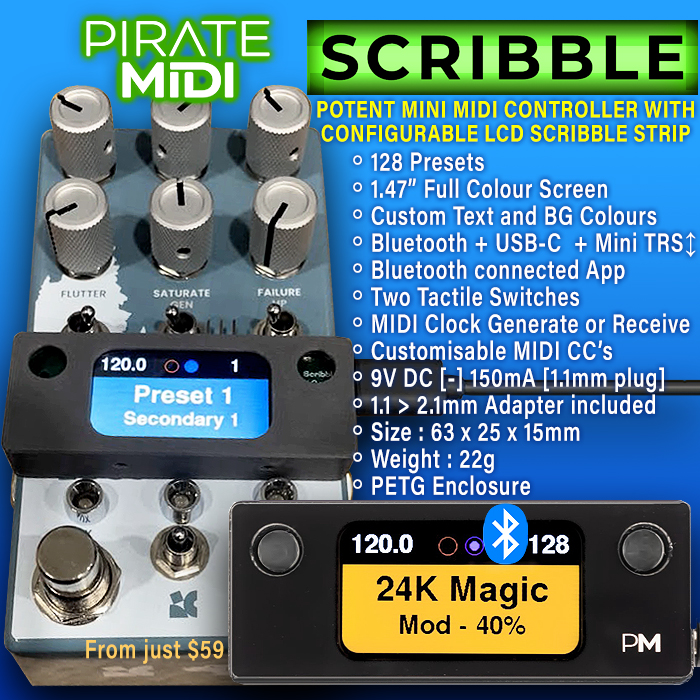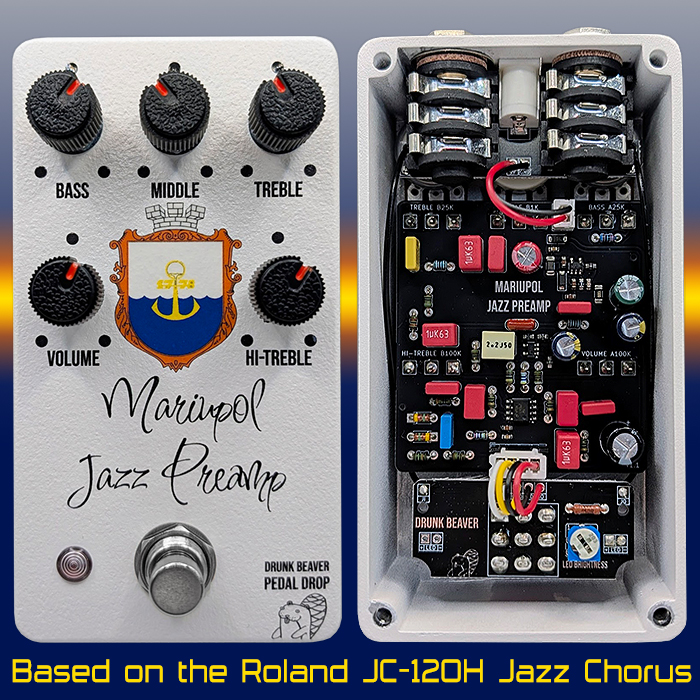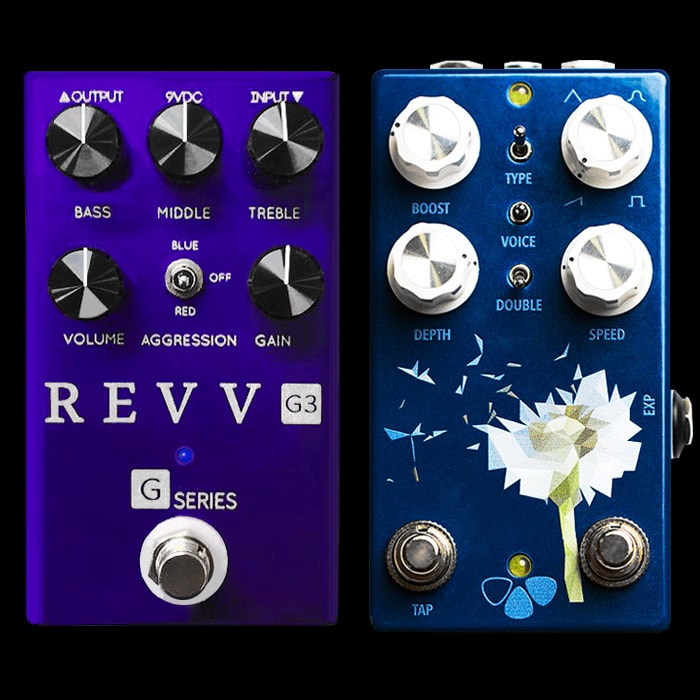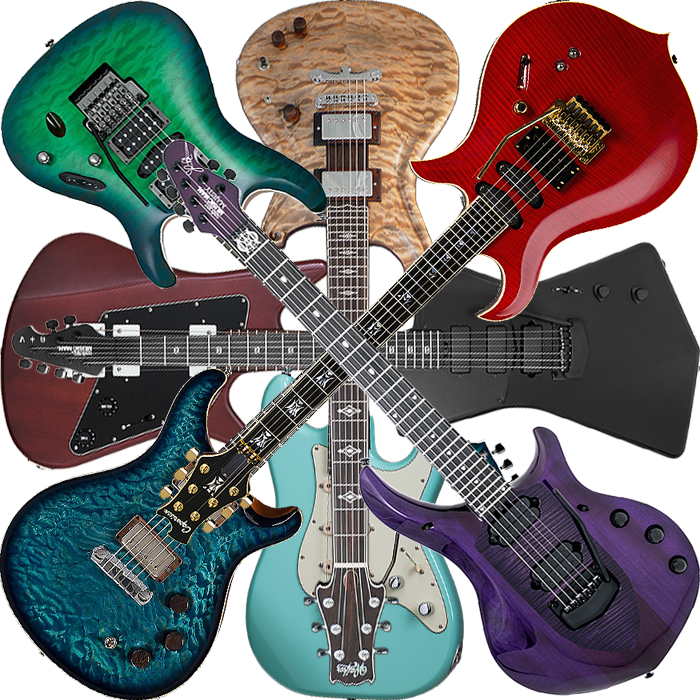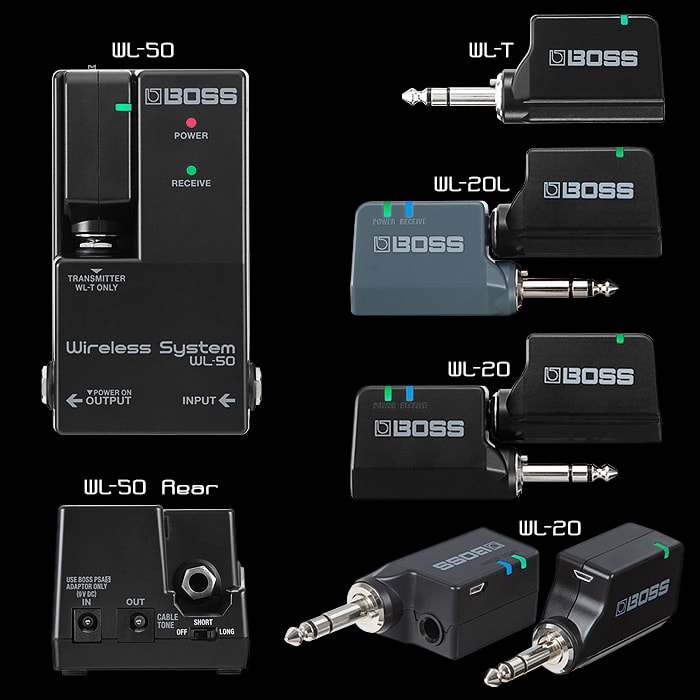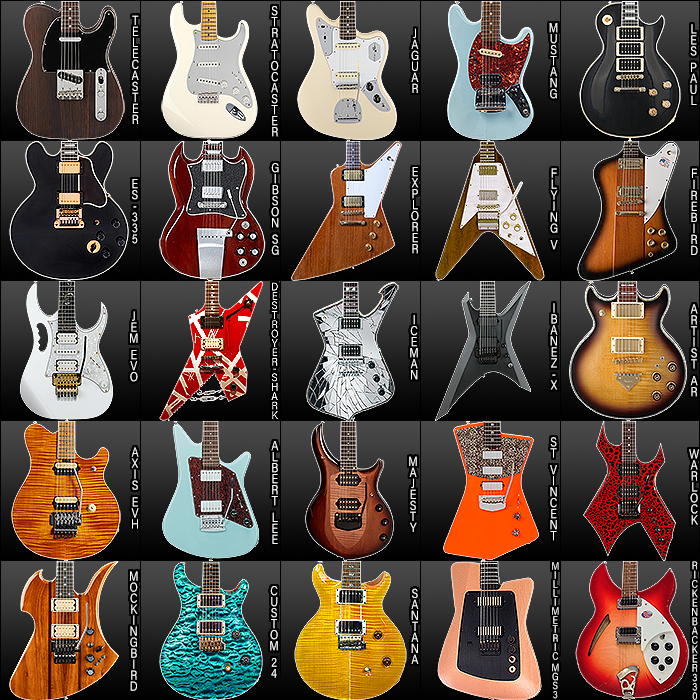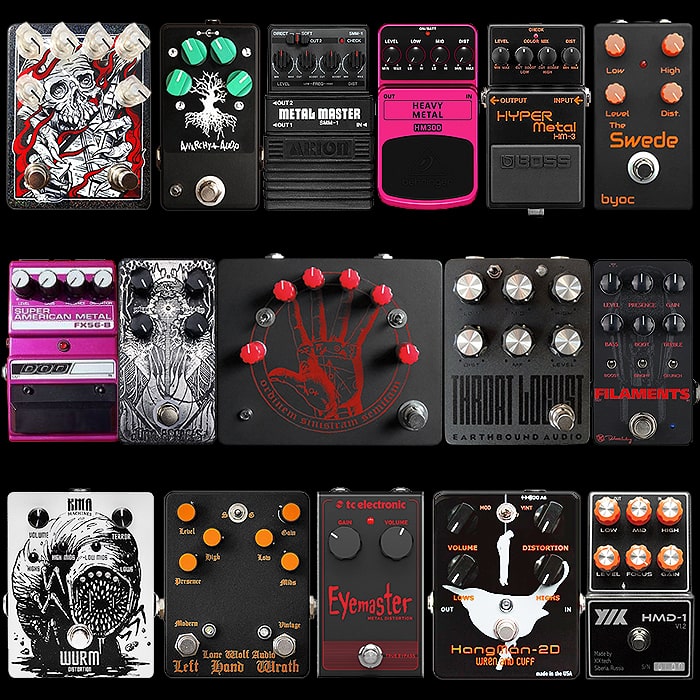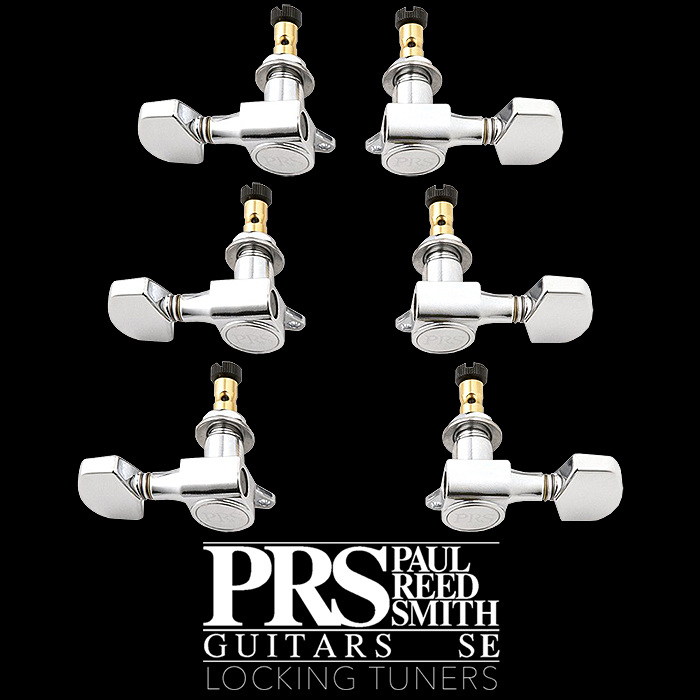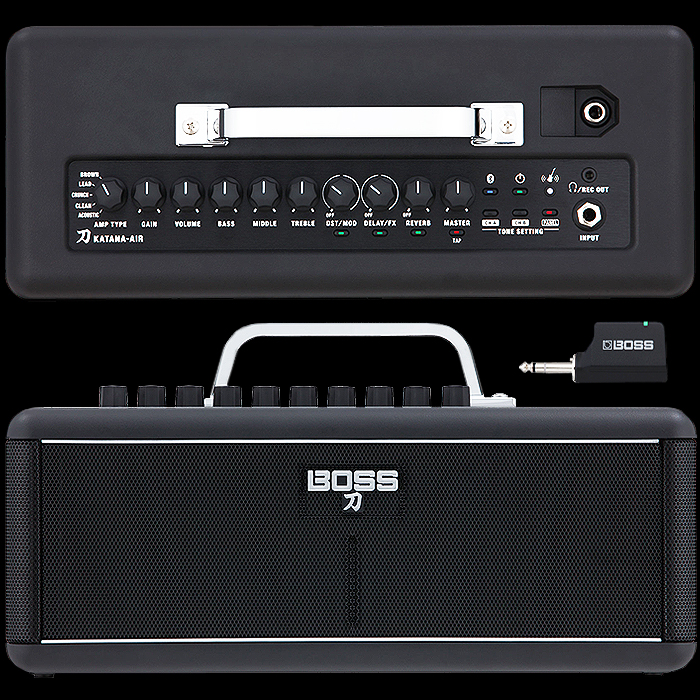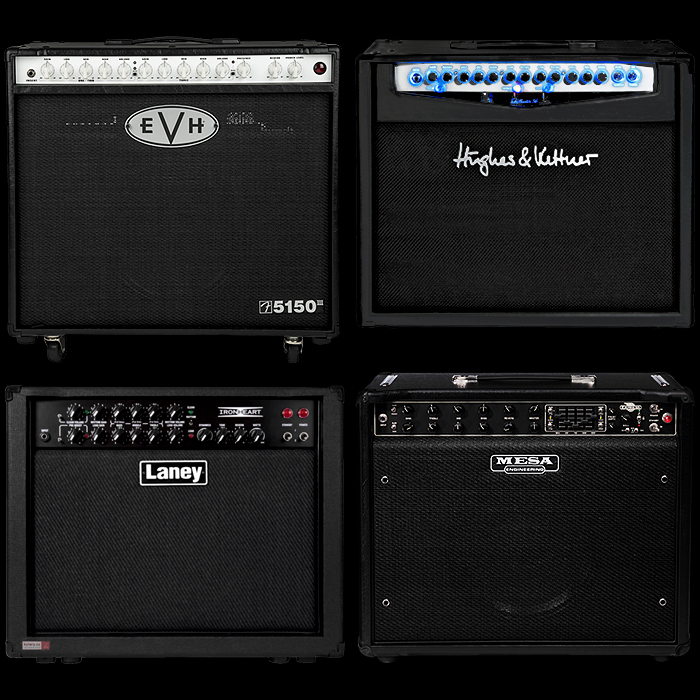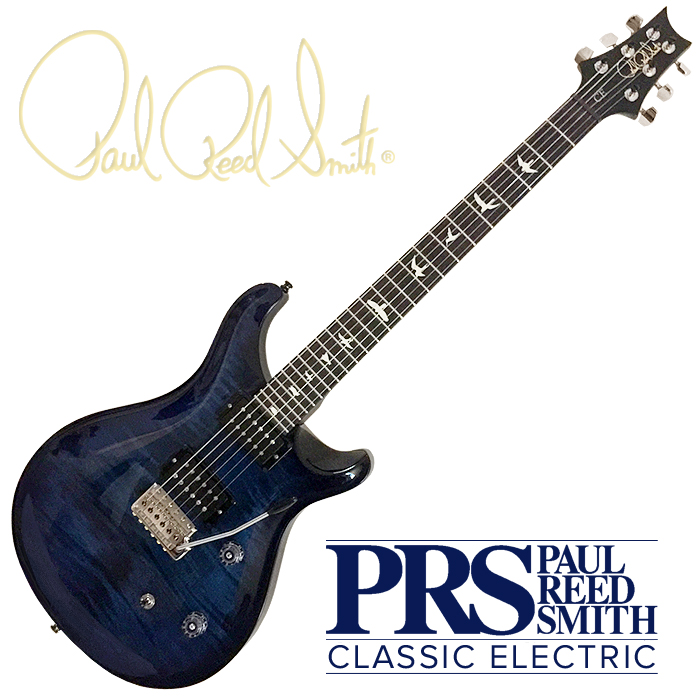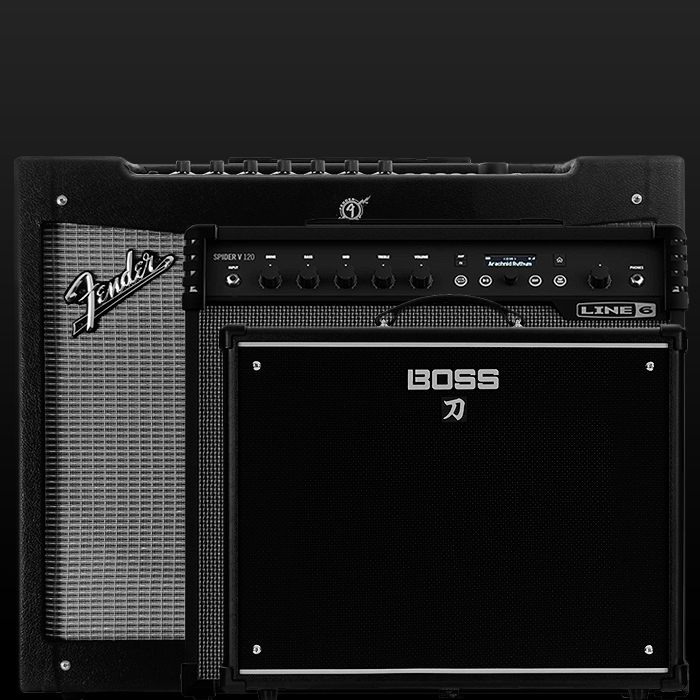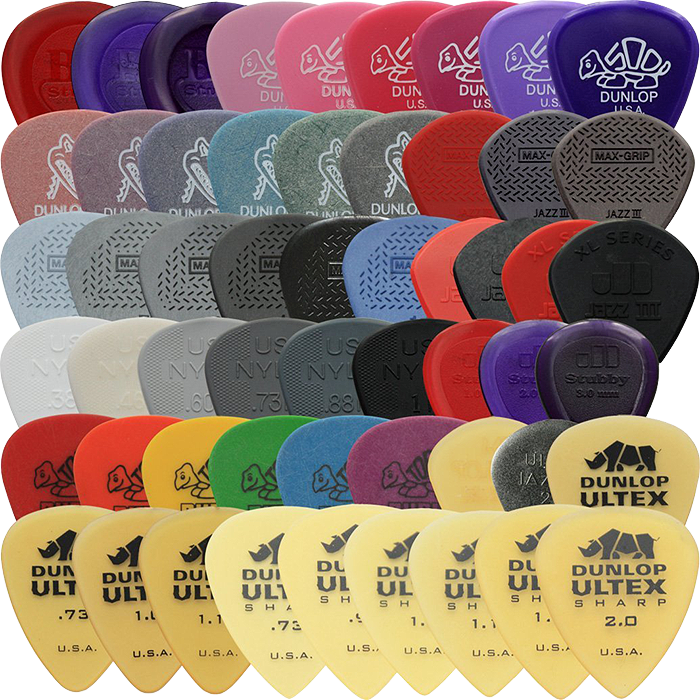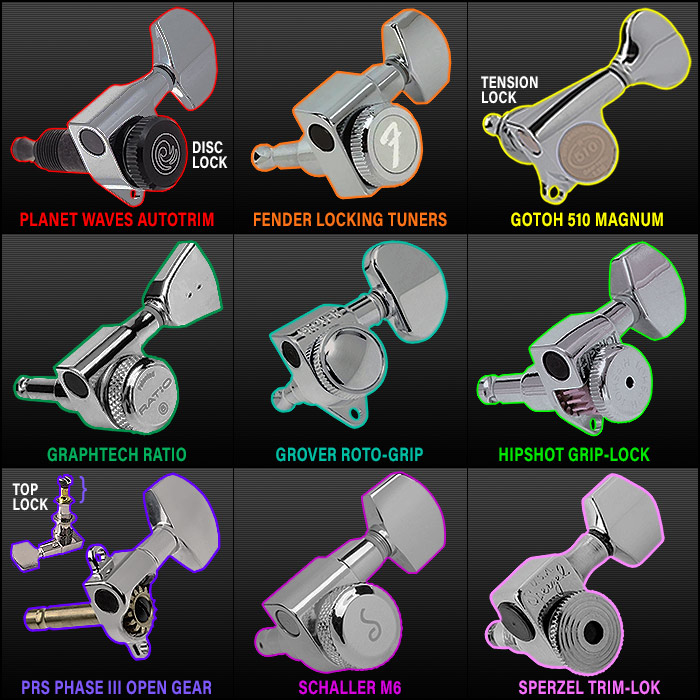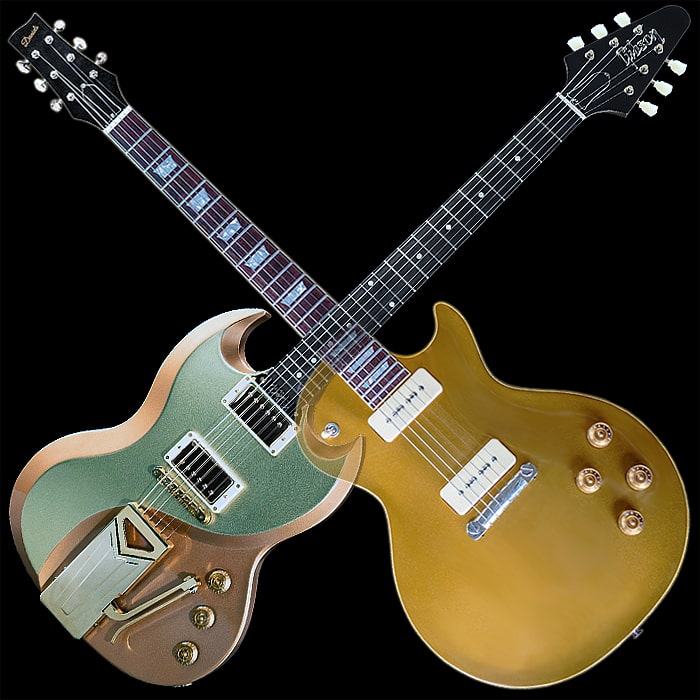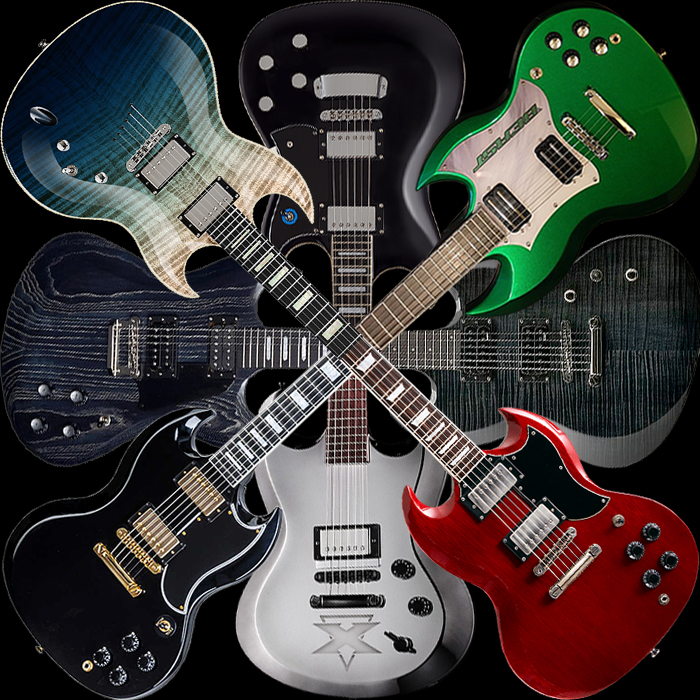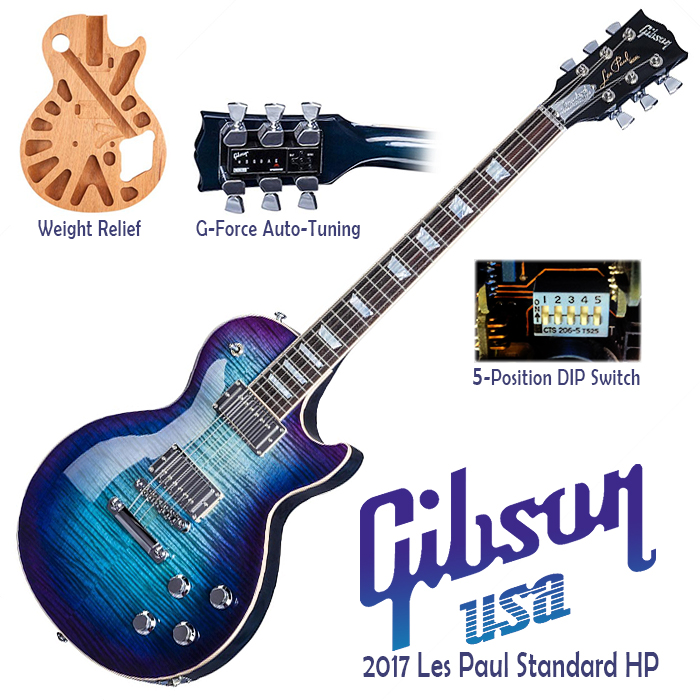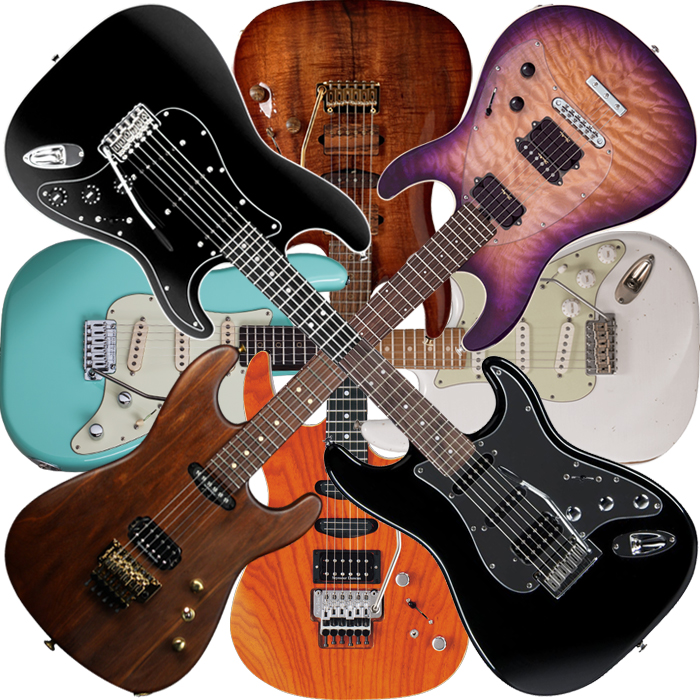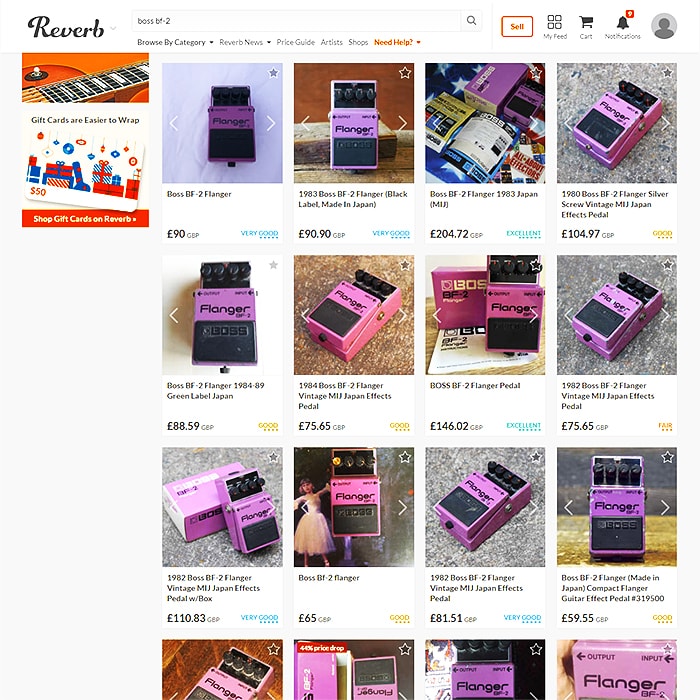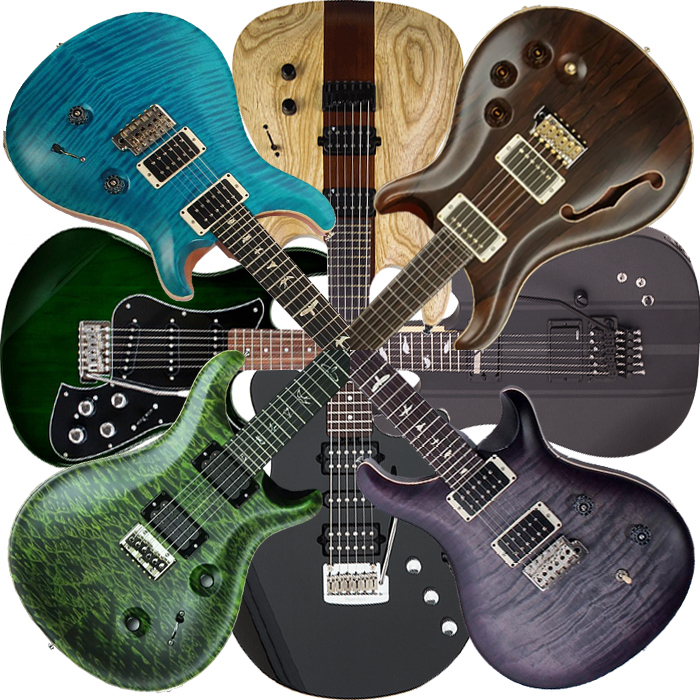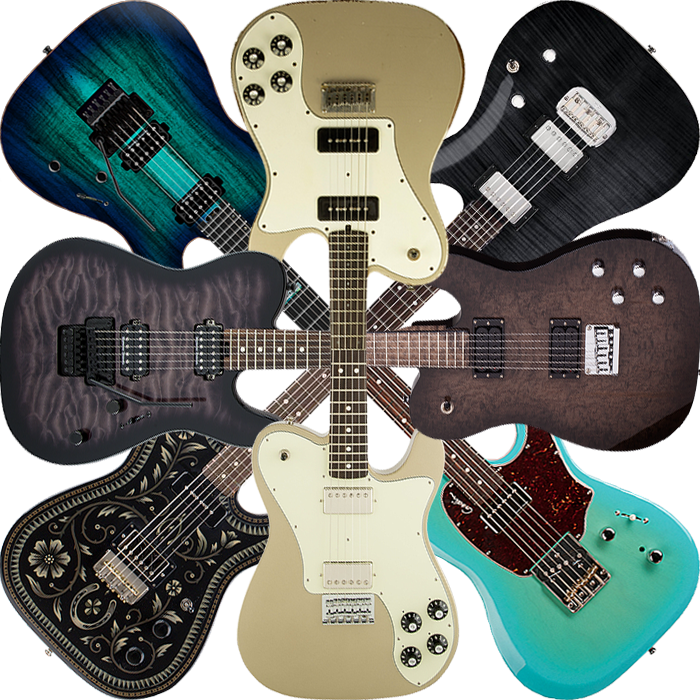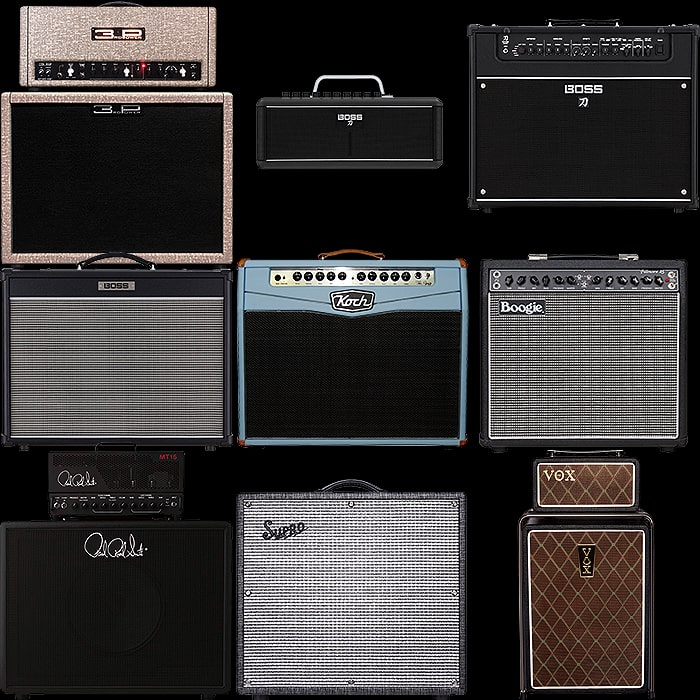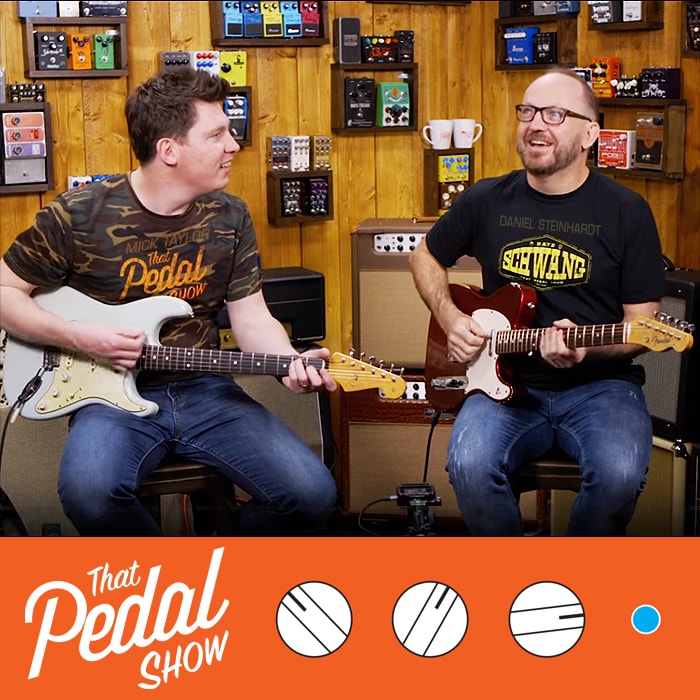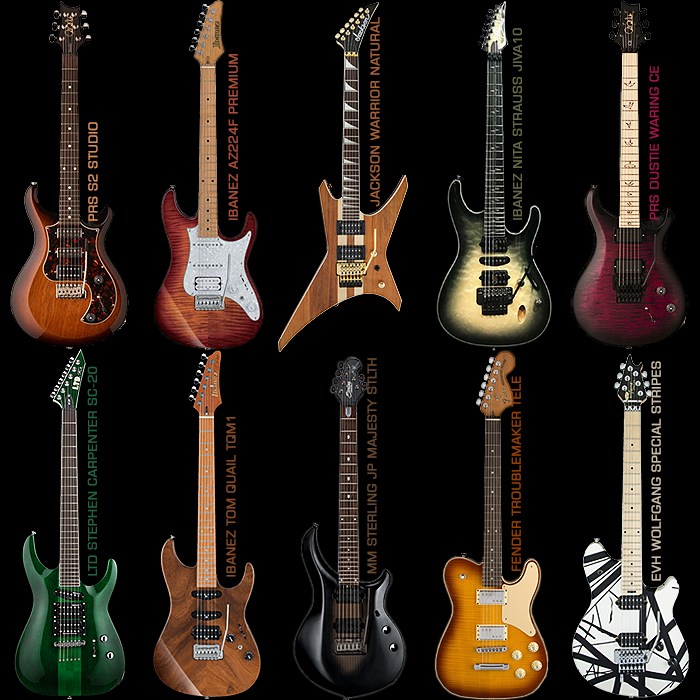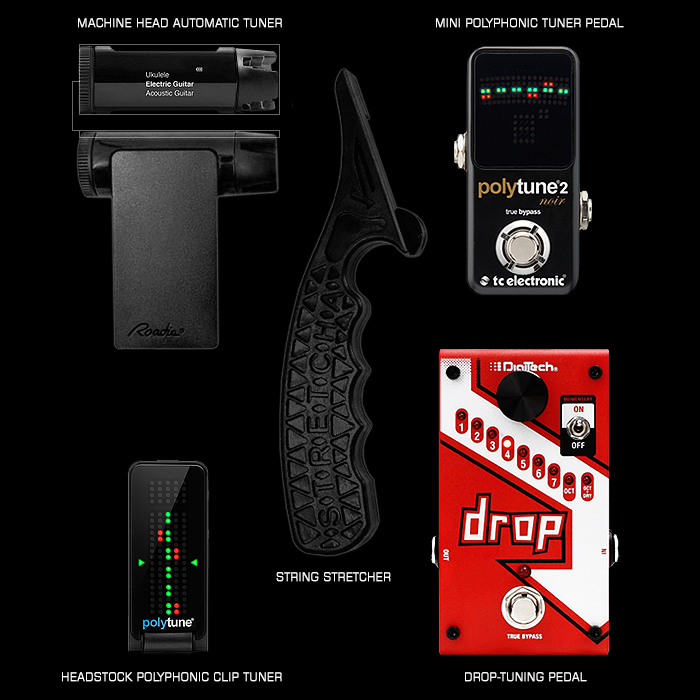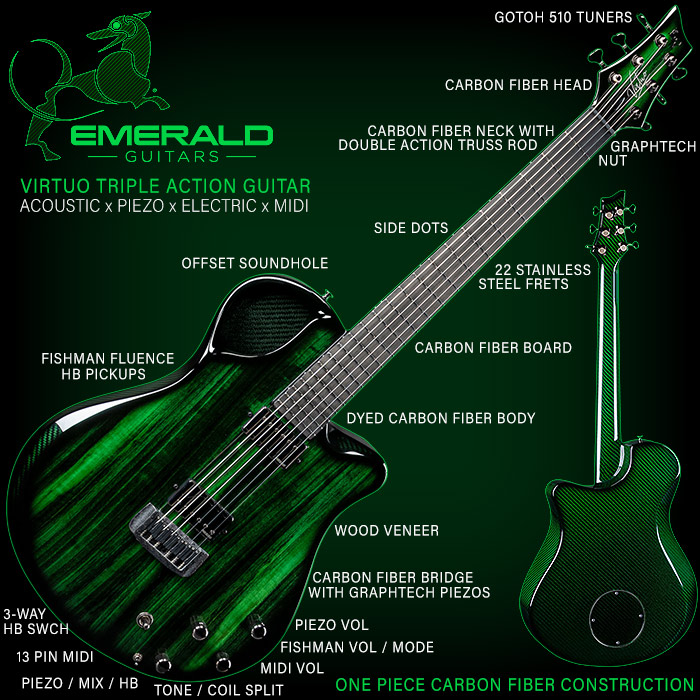The Perfect Electric Guitar Design and Why

Following on from my visualisations of Perfect Pedals and Amp I now add my take on my idealised guitar - of course largely building on and evolving from PRS here. When I scope out a guitar for myself I have a number of key criteria in mind - which must be present in a guitar or easily upgradeable at home. In fact the easiest way to communicate this is why a top-to-bottom checklist with explanations - the highlights of which are covered in the visual above:
Headstock
As mentioned in my piece on Headstock Shape - this is crucial to how well the tuning dynamics of a guitar work, and how well the guitar holds tune, the key points for the headstock being:
- Shape of headstock vs string distance / string pull and perpendicularity of strings through Nut slots. PRS and Music Man have the best headstock shapes for this - with minimum string travel distances and strings all hitting the Nut in parallel fashion
- Locking Tuners - these are essential for tuning fidelity as well as quick and easy string changes - they are an absolute must for me
- I like my headstock ideally to either match the fretboard colour, or match the body colour / pattern / wood top
- Easy Truss Rod access is key - I think manufactures should have indicator arrows too on direction of tightening / loosening neck (Concave vs Convex) - I still get nervous about adjusting my truss rods
Neck
Along with the Headstock, this is the most important part of the guitar - the one you spend the most time with. The pleasure and ease of playing a guitar is incredibly dependent on neck feel, and how well it feels to you. These are my key neck pointers:
- Nut - I prefer the graphite types and PRS ones - I believe PRS actually uses bronze powder into a plastic resin, but there are many equally great graphite infused resin plastics like GraphTech's Tusq. I prefer these over bone, as they are more durable and last longer
- Rosewood or Ebony board - I actually prefer Rosewood really, but both are good - the former is a little warmer somehow. Maple is also a decent neck wood, but shows up marks to easily - even in roasted versions - so I will always take Rosewood then Ebony as my first picks
- Rosewood or Maple neck - Ideally quarter-sawn one-piece along the grain or compound laminate neck - my main guitar is actually a scarf-jointed 2 piece and that works fine too - my ideal combination though would be smooth satin Rosewood Neck with Rosewood Board too. Note that I don't really like gloss finish on neck - needs to be either Satin or just oiled natural wood
- Neck Profile - Thin, Narrow, Compund, Fretboard Radius, C-Shape, D-Shape etc. - don't get hung up on the terminology - just cop a feel of the neck and see what suits your playing style. I myself tend to prefer thinner neck profiles, and I use my thumb quite a lot, so neck profile will depend on the size of your hands, length of fingers and playing style. There is probably a wider range of necks that suit you than you might think, and every manufacturer has their own idiosyncrasies - which means the only sure-fire way is to try this yourself - in fact you should really try all guitars before you buy - to ensure that general fit and finish is perfect and up to scratch and that everything feels great in the hand, as well as plays well
- Scale Length - This hasn't been particularly important to me, I generally just add the string gauge to adapt feel - I'm fine with anything approaching 25" or so, I've not tried any extended-scale-length guitars yet - like baritones or multi-scale / fan-fret types
- Tall Stainless Steel Frets - one thing PRS does not currently do right as far as I am concerned - their Nickel-mix frets may have a slightly warmer tone, but they wear down too quickly really. You need your frets to be as hard and durable as possible - if they are slightly taller, then you can polish and file them down evenly over decades of use and you won't need to refret so often if at all
- In terms of number of frets - I tend to go with the extended range of 24 frets vs the vintage 22. Most older players swear they get better harmonics and tones with 22 frets because of where the neck pickup can be placed, while with 24 frets, you don't supposedly get the right golden ratio spread between neck and bridge pickup - it depends really on if you put more importance on tonal detail or note reach and playability - I personally am somewhat in the 24 frets camp at the moment, although not rigidly so
- I really like interesting fret markers, like PRS's birds - pictured in my favourite 'hollow' / outline variety - if and when I come to making my own guitar, I would likely choose some animal totems of my own
- Side Dots - most of the time you are staring down at the side of your neck - so it makes sense to have side-dot fret-markers - ideally in luminescent Luminlay style for added visibility
- Strings - I mostly play PRS and D'Addario NYXL strings 9-46 or 10-46, with a little bit of Ernie Ball Slinky, and Elixir Optiweb - I still have not formed a definitive decision on overall preferences here
Pickups
I tend slightly towards Humbuckers, but also like the spankiness and sparkle of Single Coils on occasion. Ideally for me a coil-splittable or coil-tappable humbucker set (like a PRS 85/15) which can give you Strat and Les Paul -like tones is perfect. In fact if you had one guitar that could entirely approximate Telecaster, Stratocaster and Les Paul tones all-in-one then that would sort of be the holy grail.
There are a number of really great pickup manufacturers - including the big 3 - Seymour Duncan, DiMarzio and Bare Knuckle probably - with Fishman rising fast. If I could choose any myself, I would probably go with the latest state-of-the-art Fishman Fluence style pickups - which have a number of internal voicing capabilities. I would have 3 in a row - so that I could coil-split them for Strat tones, as well as use Single Coil and Humbucker designations in any combination.
I don't think enough is done yet to allow easy swapping of pickups - there are some 'on-rails' innovations due - where you can simply snap different pickups in and out of a common backing plate, but not enough has been done by guitar or pickup makers to make this process any easier yet - and most of the time it involves complex wiring and soldering.
I actually like specific versions of pickups from all manufacturers, but what I truly value is great tone alongside great versatility and variation potential in tone - so that each position of your 5-way blade switch sounds noticeable different.
Bridge
My preference here is for a Tremolo bridge - I am a big fan of the PRS classic Trem bridge, as well as the now rather rare Ibanez SynchroniZR bridge - but generally modern-style tremolo bridges with as much body-contact as possible, but still plenty of movement. I would ideally like a super-simplified Floyd Rose bridge - which was near enough infallible and did not require locking nuts - so I could perform Steve Vai twangs with ease. Yet Floyd Rose's are all still a little too fiddly and over-complicated for me, and a real pain when it comes to tuning changes and changing strings in particular. If and when I go for that improved some-time-to-materialise Floyd Rose, I would ensure it had a EVH D-Tuna on it for easy switching to drop-D. In fact more conventional Tremolo bridges should really come with that essential accessory too.
For Tremolo bridges - you need to ensure you have a solid milled Brass or Steel block for perfect resonance. It's the one major change I made on on my PRS CE - switching to USA-made bridge with brass block. Generally you want something which allows quick and easy string changes, and maintains optimal tuning fidelity - of course sounding great all the while.
I also find many bridges are overly fiddly and fussy to tweak for intonation. Instead of having twin saddle adjustment screws for height - they should come up with a better system for adjusting intonation - this part of guitar design has not really advanced for decades now.
I also like the smooth round-edged block saddles rather than the curved sledge-style Fender traditional bridge saddles - much more comfortable when string-muting etc. Generally though a 6-point or flat-plate tremolo with maximum body-contact for better sustain and resonance.
Pickup & Tone Controls
My preference is usually for a single Volume and single Tone pot, with additional swtiches and toggles for further pickup voicings and tonal changes.
In my above example I have the standard 5-way Blade Switch with single Volume and Tone Pot, and 3 x 3-way toggle switches - one-per-pickup - which kind of would do the PRS 513 thing for Single-Coil, Clear Humbucking and Deep Humbucking. Here you can switch them wholly independently.
On the upper horn of the guitar I have an additional optional 3-way selector - potentially controlling the Fishman Fluence pickups for Acoustic, Strat-like and Les-Paul-like core tones, or Tele, Strat and LP style approximate tones. Fishman Fluence pickups can already do plenty of really clever things, and they are still just at their infancy. There also used to be the really smart Music Man Reflex - which had a plethora of pickup tone configuration abilities - I can only imagine a better, more usable system will eventually arise to give guitarists far more powerful control from a single guitar.
The holy grail in this area is to be able to pretty convincingly recreate core Tele, Strat and Les Paul tones out of a single guitar. Which would be great news for concert guitarists right around the world. Players like John Petrucci get the variety of tones by mixing in a separate set of Piezo pickups on the bridge - they can use those to generate convincing acoustic style tones, and give a mahogany guitar really decent sparkly fender-like tones too - as John uses them.
I rationalise that eventually single Fishman Fluence pickups will be able to do this as well, so you can get the perfect and versatile tonality out of just the one set of pickups, but depending on your playing style, adding Piezo options should not be overlooked. Actually certain Godin guitars also have Guitar synth electronics - so you can output to midi - possibly that might needed to be added as a consideration within my general musings - but probably for later...
Guitar Body
Different guitars have different wood associations - in terms of reductive soundwave filtering. In effect the Tone Wood argument in reverse - and to do with what impact different wood grains have with modulating the standing waverforms that emanate from plucked strings. Different woods 'absorb' / reduce different core frequencies giving you a brighter or deeper core sound with more or less resonance and sustain. Alder, Ash, Basswood and Maple are associated with brighter tones, Mahogany with deeper and richer tones - although a lot of that is to do with Strings and Pickups too - and technique actually.
For my wanting to get the 'best possible tone' with the most versatility, I tend toward a deep and rich core body wood like Mahogany with a brighter Maple Top / Cap. I also really like wood-figured and patterned tops, particularly of the more liquid Quilted Maple variety. There is a huge inconsistency in the quality of Maple or say Burled Poplar tops though- with some versions being particularly patchy, while other are more evenly spread. The trick is really to get the best quality of top without paying the silly AAA or 10-Top prices.
There are also a plethora of colours and different styles of paint finishes. I like a variety of semi-translucent 'Burst' finishes where you can clearly see the wood grain. For the body though I prefer glossy hard 'Poly' paint as this protect the guitar for longer. If you're after more of a vintage or relic-style finish, you would go with a more satin Nitro-finish here. I am not really a fan of 'relic'd' guitars although there are more around than ever - much the same as I'm not a fan of torn and shredded jeans. If the guitar has become naturally 'aged' over time, then all good and well, but fakery for the sake of a particular aesthetic is just a little crass for me - especially as too many players pretend that those guitars are 'road-worn' by their own hands.
I say you earn your stripes (dings and scratches) and serve your time.
Actually! One thing I left out under Body - was 'Body Shape' - my perfect body shape is the classic PRS Doublecut carved custom top - exactly as above. I have a thing for grabbing guitars by the top horn - and this shape just feels right for me, and looks beautifully elegant too.
Strap Locks
The most common alteration I make to my guitars is to add Strap Locks to ensure the guitar is properly secure on my shoulders. There are several decent types around - including Dunlop, Ernie Ball and Schaller ones. My preference is for the Schallers - their upward 'cupping' mechanism gives you an extra fail-safe and extra piece of mind for me!
Final Thoughts
My favourite 3 or 4 guitar makes in order are probably PRS, then Music Man, Ibanez and Schecter. I often conisder other makes - like Fender and Gibson, but then self-check myself on headstock shape, tuning-fidelity, fit and finish, build quality, versatility etc. and normally come back to my 4 preferred brands.
The first guitar I ever bought was an Ibanez Roadstar RG-440 (back in 1986) where I looked upon the Fenders and Gibson as somewhat antiquated relics. Right from the start I was a modernist rather than a classicist - looking for innovations and improvements, better quality and ergonomics over something with a history and rock'n'roll pedigree. Today I also look towards Strandberg and more innovative manufacturers who are breaking down the old norms further and moving things along - making more streamlined, more ergonomic, smarter and better-built guitars.
When you buy a PRS or Music Man, you know you are getting the very best quality. Fender and Gibson through their pedigree have been largely allowed to rest on their laurels - and in many ways most of their innovation stalled in the 60's - they don't really need to change anything to sell a bunch of guitars. All the while other up-and-coming manufacturers need to make significant improvements just to compete. You can get better quality, better sounding and more reliable Fender and Gibson style guitars from other makers nowadays. Yet the re-sale market is still owned by those 2 brands, as the buying public is anchored to tradition. So if your main motivation is your financial investment and re-sale price, then you'd have to go with the old 2. If you're after innovation and build quality look to PRS, Music Man, Ibanez, Schecter and Strandberg. There are also a myriad of smaller made-to-order operations like Framus and Kiesel, but there you are opening yourself up to other vulnerabilities and even lower re-sale prices - depending on your personal selections.
When buying a guitar though, the most important thing is 'guitar feel' and in that I mean how good the neck feels to you really. You can tweak and tune everything else to a large degree, but if the neck profile does not feel right, you will never get on particularly well with said guitar.
Before buying a guitar - you should really spent a good 10-20 minutes with it, make sure that all notes ring out and try bending all positions on the fretboard to ensure that there are no dead notes or zones - which could indicate out-of-shape neck, as well as fret and other potential setup issues. Actually I should have mentioned 'Straight Neck' above - I pretty much take that as granted at the £800+ level, and certainly up at £2K.
Also - you should make up your own rules and develop your own tests. People will have different criteria, and you should be making your own independent decisions - which should mostly be around 'does it play well?', 'does is sound good', and 'does is feel great' - if you can answer all those positively then you are on to a winner - minor blemishes in finish will help you negotiate a discount but are not that important to the dynamics of owning and playing a guitar - although they could impact on resale values. Ironically a pristine guitar with one tiny 2 mil scratch can be worth a lot less than a new guitar which looks like its fallen down a 100 storey staircase and hit every step on the way down - so don't get caught up in the hype either way - just do your own thing ...

